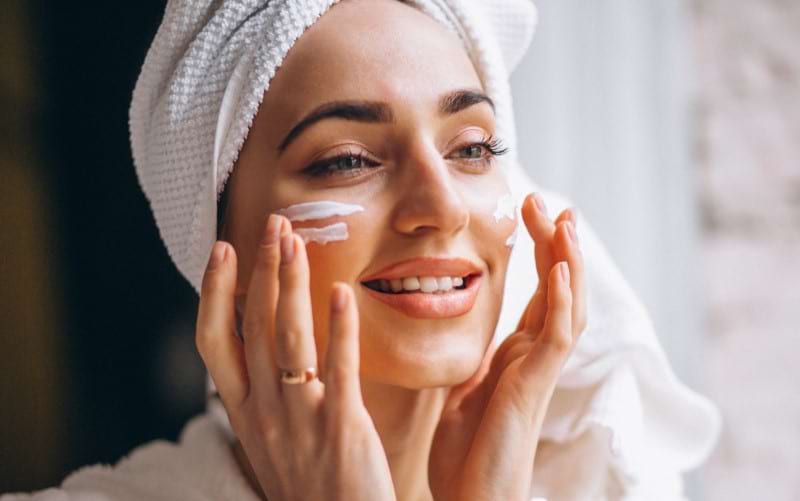Granuloma annulare is a benign skin condition that causes small, red, or skin-colored bumps to form in a ring shape. The exact cause is unknown, but studies suggest a possible link between caffeine intake and the development or worsening of the condition. Prevention includes avoiding known triggers, good skin care, limiting caffeine intake, and maintaining a healthy lifestyle. Treatment and management include a combination of self-care measures, such as avoiding known triggers, and medical therapy, such as topical corticosteroids, ultraviolet light therapy, and systemic therapy. If you suspect that coffee may be a contributing factor, speak with a dermatologist. They can help identify your condition’s cause and provide appropriate treatment options.
This skin ailment, known medically as granuloma annulare, manifests clinically as a ring or annular cluster of tiny red or skin-colored pimples.
These bumps, which often develop on the hands and feet, can appear anywhere on the body and may be itchy.
Although the precise reason why granuloma annulare develops is unknown, there are various hypotheses about its origin.
Consumption of coffee is mentioned in connection with one of these hypotheses.
Does caffeine cause granuloma annular?
Several beverages, such as coffee, tea, and soda, contain the stimulant caffeine. Some research has linked coffee use to an increased risk of granuloma annulare.
Caffeine’s dilation effect on skin blood vessels can make granuloma annulare worse.
Caffeine intake has been linked in specific research to either causing or exacerbating granuloma annulare. This consumption may play a role, although it is unclear whether or not it is the primary cause of the illness.
Furthermore, it is essential to note that numerous other factors, including heredity, hormone imbalances, and certain drugs, may also contribute to the formation of granuloma annular.
Seeing a doctor can help you rule out more serious issues and get you started on recovery.
Caffeine may play a role in the development of granuloma annulare, although further data are needed to substantiate this connection.
Caffeine restriction may not affect the disorder much because it is benign and asymptomatic and usually goes away on its own after a few years.
Preventative tips to lower granuloma annulare development
Granuloma annulare prevention can be difficult as the precise source of the ailment is still unknown.
However, several actions can be taken to lower the chance of granuloma annulare development or to stop the illness from getting worse:

1. Avoiding known triggers
If you have a history of granuloma annulare or have had the condition diagnosed, it’s crucial to attempt to stay away from recognized triggers such as sun exposure, skin injuries, and specific drugs.
2. Proper skin care
Taking proper care of your skin might help lower your risk of getting granuloma annulare by keeping it hydrated, avoiding harsh soaps and detergents, and using sunscreen.
3. Limiting caffeine consumption
As was previously noted, certain research has indicated that there may be a connection between caffeine and granuloma annular.
Therefore, restricting caffeine intake may aid in preventing the occurrence or exacerbation of the illness.
4. Keeping up a healthy diet and lifestyle
Eating healthily and keeping your weight in check can help lower your risk of getting granuloma annular.
Regular exercise, abstaining from smoking, and moderate alcohol use may also be advantageous.
It’s worth noting that these prevention steps are not scientifically proven to prevent granuloma annulare but are based on studies and observations that suggest a possible link between certain factors and the condition.
It’s always best to consult a healthcare professional for personalized recommendations and treatment plans.
Treatment and management of granuloma annulare
Granuloma annulare is usually treated and managed with a combination of self-care techniques and medical therapy.
Treatment objectives include controlling the symptoms and enhancing the condition of the afflicted skin.

1. Self-care measures
- Avoiding known triggers, such as exposure to sunlight, friction, or irritation.
- Keeping the affected area clean and dry.
- Using moisturizers to prevent dryness and cracking of the skin.
2. Medical therapy
Topical corticosteroids
These drugs can help lessen irritation and inflammation. They are typically applied once or twice daily to the afflicted area.
Ultraviolet light therapy
This treatment includes administering regulated doses of UV light to the afflicted skin. It can aid in the rash’s healing and stop it from returning.
Systemic therapy
Oral or injectable drugs may be used to inhibit the immune system and reduce inflammation in situations that are severe or extensive.
These drugs include dapsone, hydroxychloroquine, and methotrexate.
As was previously indicated, additional research is required to confirm the relationship between caffeine and granuloma annular.
However, as a preventative strategy, you might consider cutting back on or removing coffee from your diet if you think it might cause or worsen your condition.
FAQs
What is granuloma annulare?
Granuloma annulare is a skin condition that causes small, red, or skin-colored bumps to form in a ring or annular shape.
These bumps may be itchy and can appear anywhere on the body, but they are most common on the hands and feet.
What causes granuloma annulare?
The exact cause of granuloma annulare is not known, but there are several theories about what may trigger the condition.
One theory suggests that coffee consumption may be a contributing factor.
Can caffeine consumption worsen granuloma annulare?
Caffeine can cause the blood vessels in the skin to expand, which can aggravate the symptoms of granuloma annular.
Some studies have shown that caffeine intake may trigger granuloma annulare or make it worse, but more research is needed to confirm this association.
How can I prevent granuloma annulare?
Prevention of granuloma annulare can be challenging as the exact cause of the condition is not yet known.
However, some measures can be taken to reduce the risk of developing granuloma annulare or to prevent the condition from worsening, such as avoiding known triggers, practicing good skin care, limiting caffeine intake, and maintaining a healthy diet and lifestyle.
How is granuloma annulare treated and managed?
Treatment and management of granuloma annulare typically include a combination of self-care measures and medical therapy.
Self-care measures include avoiding known triggers, keeping the affected area clean and dry, and using moisturizers.
Medical therapy includes topical corticosteroids, ultraviolet light therapy, and systemic therapy for severe or widespread cases.
Working closely with a healthcare provider to monitor the condition and adjust treatment as needed is essential.


